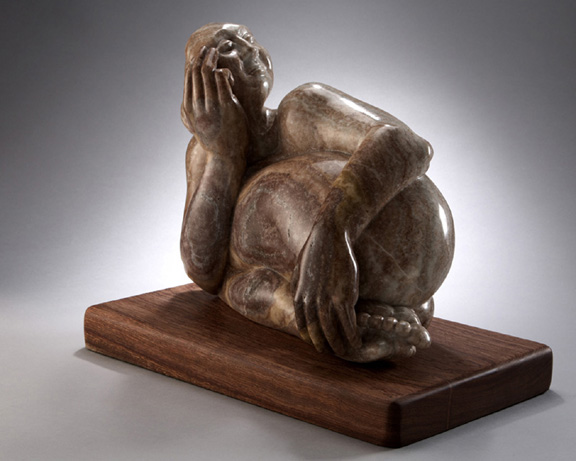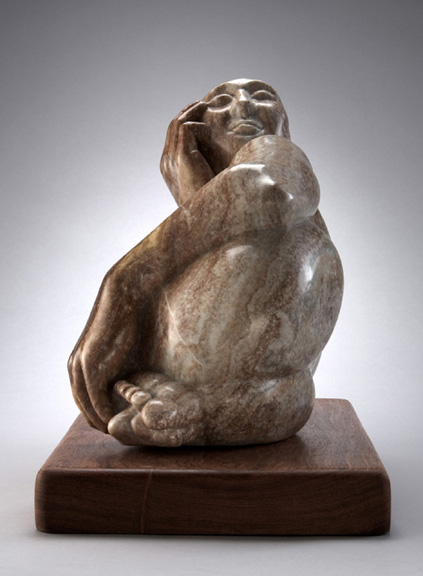State Fair Winners: Richards Poey, Sculpture
Richards Poey won the sculpture award both this year and last year--here are his thoughts.


What’s the reason you show at the State Fair?
The State Fair is one of the few opportunities artists have to show their work to thousands and thousands of people who appreciate fine art. This, in turn, gives you an opportunity for sales. But more than that, the State Fair is a prestigious exhibition—only about 20% of all entries are accepted, so you’re in good company. Ribbons, of course, are the frosting on the cake.
This year, as in 2006, I was awarded first place in sculpture. This year’s entry is a stone carving entitled Daydreams. A few words about the piece: If you close your eyes, get comfortable, and think of nothing but pleasurable things—that’s what Daydreams is all about. I have purposely enlarged hands and feet and placed them in a comfortable position to emphasize the totally relaxed mood of the woman. Her gentle curves, closed eyes and faint smile re-enforce the image of complete comfort with her life.
Have fairgoers commented on your work to you?
It’s a bit too early to know fairgoers’ reactions, though I have received many congratulations from other artists who attended the preview last Tuesday.
How do you make your work?
I work in both stone and bronze. Stone carving is a subtractive process, while bronze is an additive one. I’m never sure what’s “in there” when I start a stone carving. Though I may have some preconceived idea of the design, the stone provides a lot of the direction. I generally don’t start with square or rectangular block of stone. Rather, I start with odd shaped chunks. So the stone’s initial shape, fractures and coloration dictate much of the content.
In creating a stone piece, I mostly use the tools that have been used for thousands of years—hammer and various shaped chisels. Sometimes I use pneumatic power tools to rough out the design, but the detailed work has to be done using hand tools. Finishing is also done by hand starting with rough wet-and-dry sandpaper and gradually working my way up to 600 or 1200 grit paper. Once polished, the piece is waxed.
With bronze I almost always know where I’m headed. I may work from a model or photographs. Bronzes are generally created by adding clay to an armature, making a mold, using that mold to make a wax and then using the lost wax process to duplicate the original clay in metal. There then follows a lot of metal working (called chasing) followed by patination.
Where do you live and work?
I work at the Minnetonka Center for the Arts and live in Eden Prairie.
How did you become an artist?
I always knew I wanted to be involved with art. My advertising and marketing career at Honeywell continually brought me in contact with artists and designers. So when I retired in August of 1997, I knew art was where I was headed.
My wife, Heidi, was already an established painter in the Twin Cities, so I ruled out painting as my medium of choice. (There was no need for competition in the household.)
For several years Heidi and I had been going to life drawing co-ops, so I decided to give figurative sculptures a try. I loved it and had a great teacher in Nick Legeros. That got me hooked on sculpture. I also took workshops at the Scottsdale Artists School in Arizona. About four years ago I thought it would be fun to give stone carving a try, so I signed up for a class with area sculptor Roger Junk. What a great experience! So here I am today, deep into both stone and bronze. My only regret is that I didn’t start earlier in life.
I typically will go out to the Minnetonka Center for the Arts about four days a week, working 4-5 hours a day. The camaraderie is great, and we all share creative and technical ideas with each other.
I am past president and current vice president/ board member/newsletter editor of the Society of Minnesota Sculptors (mnsculptors.com). I am also a member of the National Sculpture Society.